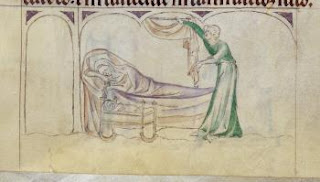Becoming archbishop, however, either motivated or simply coincided with a change in Becket's attitude. He had not formally been ordained a priest prior to this appointment to the highest ecclesiastical position in England. He was finally ordained a priest on 2 June 1162; his consecration as archbishop took place one day later. The ordination seemed to change him, and he began to live an ascetic lifestyle, quite different from how he would have lived as Chancellor.
Becket resigned as Chancellor and focused his energies on the needs of the clergy. In fact, he started trying to extend the "separation of Church and State" and reclaim the rights of the clergy for appointments to positions and jurisdiction without royal interference. This created a significant rift between archbishop and king. Within months of Becket's new position, Henry tried to formalize royal authority over clerical rights in the Constitutions of Clarendon. The Constitutions attempted to regain royal authority over the clergy and weaken the influence of the papacy in England. Becket's old friend Richer L'Aigle (mentioned here) supported Clarendon. Although many English bishops were willing to go along, Becket opposed the move strongly, causing Henry to demand he appear for trial for malfeasance. Becket agreed verbally to the points in the Constitutions, but refused to formally sign the document. He was convicted of malfeasance, but fled the court and went to the continent into the protection of Louis VII of France.
Becket threatened excommunication for Henry and Interdict for England (meaning no one could partake of the sacraments). Pope Alexander III intervened, however, sending papal legates who negotiated a compromise that would allow Becket to return.
Becket came out of exile and resumed his duties, but remained a thorn in Henry's side. In 1170, a stray comment from Henry expressing his frustration (so the story goes), led to an infamous event that would vault Becket's popularity higher than ever. It's a sad story, however, and I'll share it tomorrow.






























